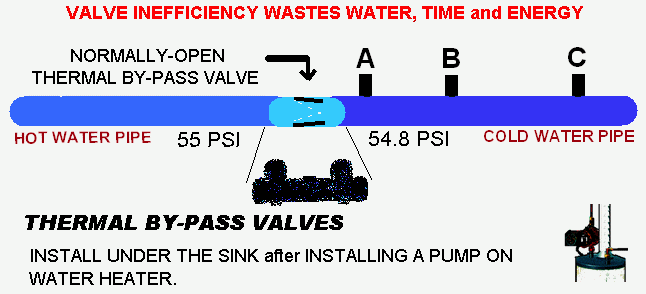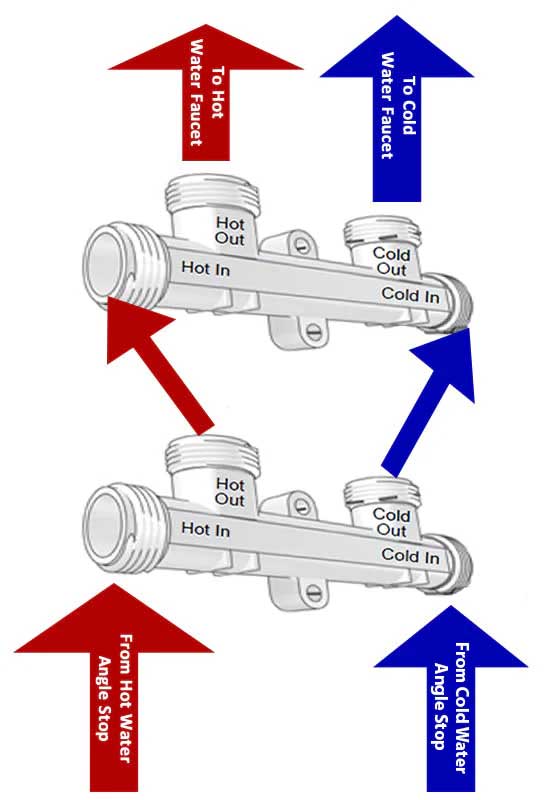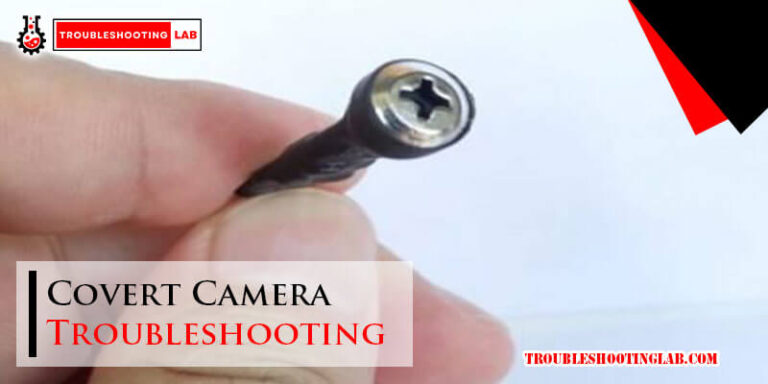Watts Sensor Valve Troubleshooting: Quick Fixes Explained
Is your Watts sensor valve acting up and leaving you frustrated? You’re not alone.
When this small but essential piece of equipment starts to malfunction, it can disrupt your water flow, increase your energy bills, or even cause unnecessary stress. But don’t worry—troubleshooting your Watts sensor valve doesn’t have to be complicated. In this guide, we’ll walk you through the most common issues, explain why they happen, and show you simple solutions to get things running smoothly again.
Stick around, because by the end, you’ll feel confident tackling the problem yourself and saving time and money in the process. Let’s get started!

Credit: www.amazon.com
Common Issues With Watts Sensor Valves
Watts sensor valves are a reliable choice for managing water flow in plumbing systems. However, like any mechanical component, they can occasionally face issues. Knowing the common problems can save you time, money, and frustration when troubleshooting.
1. Leaking Valve
A leaking sensor valve is one of the most frequent issues. This usually happens due to worn-out seals or debris trapped inside the valve. Check for visible signs of water around the valve and tighten any loose connections.
If tightening doesn’t help, the seals may need replacing. Always turn off the water supply before attempting repairs. Using the correct tools and compatible parts is crucial to avoid further damage.
2. Valve Not Opening Or Closing
Sometimes, the valve might stop opening or closing properly. This could be caused by mineral buildup, especially if your water has a high mineral content.
To address this, remove the valve and inspect it for any blockages. Soaking it in a vinegar-water solution can help dissolve minor deposits. If the problem persists, the internal mechanism might be faulty and may require a replacement.
3. Sensor Malfunction
If the sensor valve isn’t responding, the issue might lie with the sensor itself. Sensors can wear out over time or be affected by dirt or moisture.
Try cleaning the sensor gently with a soft, dry cloth to remove any grime. If cleaning doesn’t work, check the power source or battery. A dead battery or loose connection can also cause the sensor to fail.
4. Strange Noises
Unusual noises, like banging or hissing, can indicate a problem with the valve. This might be due to water pressure that’s too high or air trapped in the plumbing system.
Start by checking your water pressure. Adjust it to the recommended levels if it’s too high. Bleeding the pipes can help remove trapped air and restore normal operation.
5. Weak Or Inconsistent Water Flow
If you notice weak or inconsistent water flow, the valve might be partially clogged. Debris like rust or sediment can restrict water movement through the valve.
Shut off the water and disassemble the valve to inspect it. Flush it thoroughly to clear any obstructions. Installing a filter upstream of the valve can help prevent future blockages.
Troubleshooting Watts sensor valves doesn’t have to feel overwhelming. The key is to start with simple checks and work your way through the possible causes. Have you encountered any of these issues before? Share your tips and experiences in the comments below!
Valve Not Responding
A Watts sensor valve not responding can disrupt your system’s function. This issue often stems from power, sensor, or system errors. Identifying the cause is the first step to resolving the problem. Below are three essential troubleshooting steps to fix a non-responsive valve.
Checking Power Supply
Ensure the valve has a steady power supply. Inspect the power source for faults. Check if the cord or plug is damaged. Verify if the outlet is working using another device. If the valve uses batteries, test the battery charge. Replace weak batteries immediately.
Inspecting Sensor Connections
Examine the sensor wires for loose or broken connections. Tighten loose connectors securely to restore the signal. Check for dirt or debris blocking the sensor. Clean the sensor gently with a dry cloth. Ensure the sensor is not exposed to extreme temperatures. This can affect its performance.
Resetting The System
Sometimes, a simple reset can solve the issue. Turn off the valve completely. Wait for a few minutes before turning it back on. Consult the user manual for the correct reset procedure. Ensure all settings return to default. This can often restore normal valve operation.
Water Flow Problems
Is your Watts sensor valve causing water flow issues? These problems can disrupt daily tasks and leave you frustrated. Whether you’re dealing with low pressure or no water at all, the solution might be simpler than you think. Let’s tackle some common causes and fixes for water flow problems.
Low Or No Water Pressure
Low or no water pressure is a common complaint with sensor valves. Before you start replacing parts, check if the valve’s water supply is turned on fully. You’d be surprised how often this small oversight causes big headaches.
If the supply is fine, inspect the connecting pipes. Sediment buildup or a kink in the hose could be restricting water flow. Also, confirm that the valve isn’t stuck in the closed position, which can happen after long periods of inactivity.
Cleaning Blocked Filters
Blocked filters are another frequent cause of water flow issues. These filters prevent debris from entering the valve but can clog over time. To clean them, first turn off the water supply to avoid a mess.
Next, locate the filter screen near the valve’s inlet. Remove it carefully, rinse it under warm water, and scrub gently with a toothbrush if necessary. Reinstall it and test the flow. Did the pressure improve? If not, you might have to check for blockages further down the line.
Adjusting Valve Settings
Sometimes, the valve settings themselves are the issue. Your Watts sensor valve may have an adjustable flow control feature. If it’s set too low, water flow will be limited.
Check your valve’s user manual to locate the adjustment screw or knob. Turn it slightly to increase the flow and test the result. Small changes can make a big difference, so take it slow to avoid over-adjusting.
Did you know some valves also have temperature settings that can impact flow? If your water isn’t coming out properly, verify that these settings aren’t restricting it unnecessarily.
Water flow problems can seem overwhelming, but they’re often easy to fix with a little troubleshooting. Which solution worked best for you? Share your experience below—your insights could help someone else.

Credit: readytemp.com
Leaking Valve
A leaking valve in your Watts sensor system can be more than just an annoyance—it can lead to water damage, wasted resources, and higher utility bills. The good news? Identifying and fixing the issue is often simpler than it seems. Whether you’re a DIY enthusiast or a first-time troubleshooter, addressing the problem step by step can save you time and money.
Identifying The Leak Source
Before diving into repairs, pinpoint where the leak is coming from. Check around the valve body, the seal, and any connection points. A flashlight can help you spot small drips or moisture buildup that might otherwise go unnoticed.
Is water leaking around the threads? That could mean a loose connection. If the leak is at the seal, it’s likely worn out or damaged. Identifying the exact spot helps you zero in on the fix without unnecessary guesswork.
Replacing Damaged Seals
Damaged seals are one of the most common culprits behind a leaking valve. Luckily, replacing them is usually straightforward. Start by shutting off the water supply to avoid a mess.
Unscrew the valve carefully, keeping track of all parts. Remove the old seal and inspect it—cracks, wear, or flattening are clear signs it’s time for a new one. Pop in the replacement seal, ensuring it fits snugly, and reassemble the valve.
Pro tip: Always keep spare seals handy. They’re inexpensive and can save you a trip to the store next time you encounter a leak.
Ensuring Proper Installation
A common mistake many people make is not reinstalling the valve correctly after repairs. Tighten the connections evenly but avoid overtightening, which can damage threads or warp seals. Hand-tight is often sufficient, followed by a slight turn with a wrench.
Double-check the valve’s alignment with your system. Misalignment can cause leaks even if all parts are in perfect condition. Turn the water supply back on and monitor for any signs of dripping.
Still spotting a leak? Revisit the connection points and seals. Sometimes, a small adjustment can make all the difference.
Taking the time to troubleshoot and fix a leaking valve doesn’t just resolve the issue—it ensures your Watts system operates efficiently. So, roll up your sleeves and tackle the problem head-on.
Temperature Regulation Issues
Have you noticed your Watts sensor valve isn’t keeping water temperatures steady? It can be frustrating when the shower gets too hot or suddenly cold. Temperature regulation issues are often tied to sensor malfunctions or calibration errors. Let’s break down actionable steps to troubleshoot and fix these problems.
Testing Temperature Sensors
Your first step is to check the temperature sensor itself. Is it giving accurate readings? To test it, use a digital thermometer to compare the sensor’s output with actual water temperature. If they don’t match, the sensor may need cleaning or replacement.
Look for visible damage or corrosion on the sensor. If it’s dirty, gently clean it with a soft cloth and mild detergent. After cleaning, test it again to see if the readings improve. If the issue persists, faulty wiring could be the culprit.
Calibrating The Valve
Sometimes, the sensor isn’t the problem—your valve may be out of calibration. Incorrect calibration can throw off water temperatures significantly. To fix this, consult your valve’s user manual for calibration instructions.
Most valves have an adjustment screw or knob. Turn it slightly and test the water temperature after each adjustment. Keep a log of your changes to avoid over-adjusting. If calibration feels tricky, ask yourself: is it time to call a professional?
Replacing Faulty Components
If cleaning and calibration don’t work, you may need to replace certain parts. Faulty sensors or worn-out valves can cause recurring temperature issues. Check your valve for cracks, rust, or signs of wear.
Order replacement parts directly from Watts or a trusted supplier. Before installing, double-check compatibility with your valve model. Remember to turn off the water supply before replacing any components to prevent leaks or damage.
Temperature regulation issues can seem daunting, but breaking the problem into smaller steps makes it manageable. What troubleshooting tip will you try first?
Unusual Noises From The Valve
Dealing with unusual noises from your Watts sensor valve can be frustrating. You might hear hissing, rattling, or even a knocking sound, and you’re left wondering what’s wrong. These noises often hint at specific problems that are easy to fix if you know what to look for.
Inspecting For Loose Parts
Loose components inside or around the valve can easily cause rattling or vibrating sounds. Begin by turning off the water supply to ensure safety. Then, check the screws, fittings, and connections on and near the valve. If you find anything loose, tighten it with the appropriate tool.
Remember to inspect the brackets or mounting hardware holding the valve in place. Even a slightly loose fixture can amplify noise. If you’re unsure about which part to tighten, consult your valve’s user manual or reach out to a professional.
Clearing Air Bubbles
Air trapped inside the valve or the connected pipes is another common culprit of odd noises. This is especially likely if the noise sounds like hissing or whistling. To clear the air, open the closest faucet to the valve and let it run for a few minutes.
While the water is running, observe whether the noise diminishes or stops altogether. If it does, the issue was likely air in the system. You can also bleed your valve or pipes manually by using a bleed screw, if your setup has one.
Lubricating Moving Components
Moving parts inside the valve can dry out over time, leading to grinding or squeaking noises. A small amount of silicone-based lubricant can often solve this problem. Make sure the water supply is off before you begin.
Apply the lubricant sparingly to any accessible moving parts, such as the valve stem. Avoid using oil-based lubricants as they might damage rubber seals. Once you’ve finished, turn the water back on and check if the noise persists.
Have you experienced any of these issues? What steps worked for you? Share your story in the comments so others can learn from your experience!
Maintenance Tips For Longevity
A Watts sensor valve is a vital component in ensuring optimal water flow and pressure in your plumbing system. But like any mechanical device, it needs care to perform at its best. Regular maintenance not only extends its lifespan but also prevents unexpected problems. Let’s dive into some practical tips to keep your sensor valve running smoothly.
Regular Cleaning Practices
Dust and grime can collect on your sensor valve over time, affecting its performance. Make it a habit to clean the valve every few months. Use a soft cloth and mild soap to wipe away dirt from the exterior.
For internal cleaning, check your manufacturer’s guide. Some valves allow you to remove and rinse parts easily. If debris builds up inside, it may block water flow and cause inefficiency. Never use harsh chemicals—they can damage the valve material.
Routine Inspections
How often do you check your sensor valve for wear and tear? Routine inspections can save you from costly repairs down the line. Look for signs like leaks, rust, or unusual noises during operation.
Test the valve’s responsiveness by observing how it reacts to changes in water pressure. If it seems sluggish, there could be an internal issue. Keep a flashlight handy to inspect hard-to-see areas around the valve housing.
Replacing Worn-out Parts
Parts like seals, gaskets, and sensors can wear out after years of use. Don’t wait for them to fail completely before replacing them. If you notice cracks, looseness, or reduced performance, it’s time for a change.
Consider keeping spare parts on hand to avoid downtime. Most Watts sensor valves have standard replacement kits available online. Follow the instructions carefully to ensure proper installation.
What’s your current maintenance routine for your Watts sensor valve? Small, consistent efforts can make a big difference in its performance and longevity. Start applying these tips today and enjoy a more reliable plumbing system tomorrow.

Credit: www.premierh2o.com
Conclusion
Troubleshooting a Watts sensor valve doesn’t have to be overwhelming. Start by checking for common issues like blockages or incorrect settings. Regular maintenance ensures better performance and fewer problems over time. Always follow the manufacturer’s guidelines for repairs and adjustments.
If problems persist, consulting a professional can save time and effort. Addressing issues early can prevent costly repairs later. With patience and attention, your valve will work effectively again. Keep your system in good condition for lasting reliability and efficiency.
Simplify the process by taking one step at a time.






